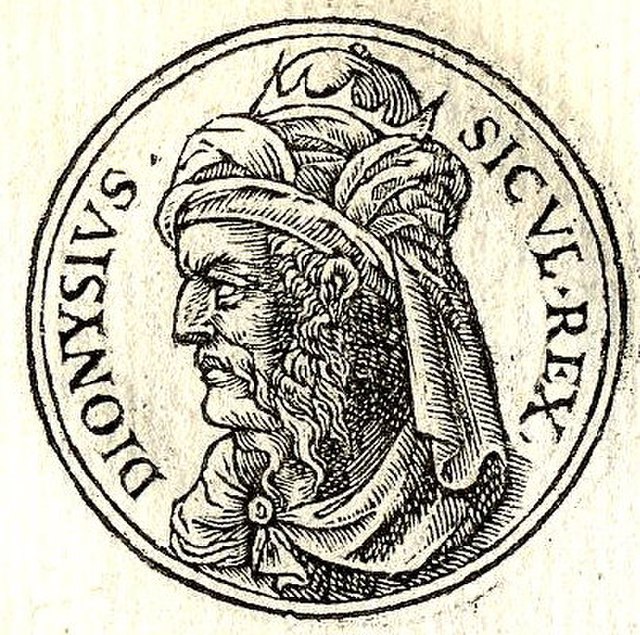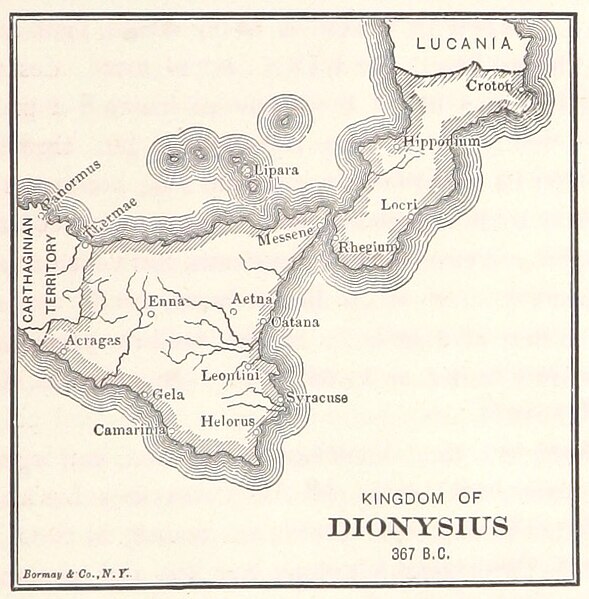Damocles is a character who appears in a anecdote commonly referred to as "the sword of Damocles", an allusion to the imminent and ever-present peril faced by those in positions of power. Damocles was a courtier in the court of Dionysius I of Syracuse, a ruler of Syracuse, Sicily, Magna Graecia, during the classical Greek era.
In Richard Westall's Sword of Damocles, 1812, the boys of Cicero's anecdote have been changed to maidens for a neoclassical patron, Thomas Hope.
Painting of the story of Damocles by British artist Herbert Gandy, featuring a Damocles surrounded by beautiful servants, lavish foods, gold, and riches, worriedly gazing up at an unsheathed sword above his head
A political cartoon from Clifford Berryman following World War I, depicting a German delegate shakily signing a peace treaty as directed by the large hand of the Allied Powers, while a large sword bearing the inscription "Peace of Justice" hangs by a thread above him (1919)
A scene from Joseph Keppler's Puck showing Damocles, wearing a crown labeled "Industry", standing beneath a large sword, labeled "Coal Strikes", which hangs above him by a thread, suggesting that the coal strikes at the beginning of the 20th century were the modern-day sword of Damocles (1903)
Dionysius I or Dionysius the Elder was a Greek tyrant of Syracuse, Sicily. He conquered several cities in Sicily and southern Italy, opposed Carthage's influence in Sicily and made Syracuse the most powerful of the Western Greek colonies. He was regarded by the ancients as an example of the worst kind of despot: cruel, suspicious, and vindictive.
Dionysius I from Guillaume Rouillé's Promptuarii Iconum Insigniorum
Kingdom of Dionysius, 367 BC






